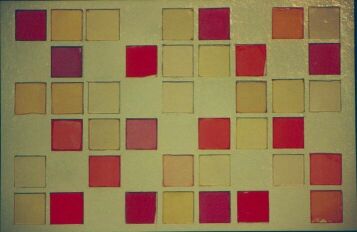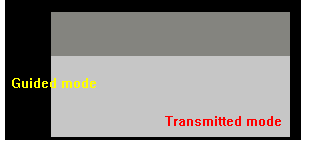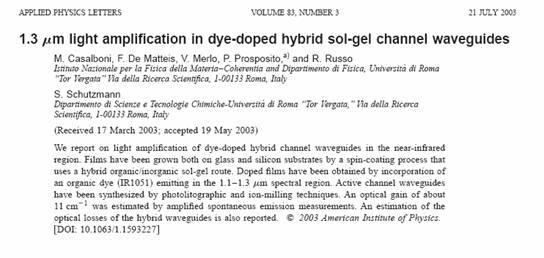New materials
 This section deals mainly with optical properties of dye molecules in glass or polymeric matrices. Glass matrices are very promising. Insertion of organic species in glass is possible only for glass produced by sol-gel technique due to the low temperature of the sol-gel process (< 200°C) that allows survival of organic species. As an evolution of sol-gel ORMOCER® or ORMOSIL® have to be mentioned. This particular sol-gel material is obtained using precursor in which an organic part is not hydrolyzed and remains in the final structure. The effect is a notably improvement in the mechanical and optical properties of the film, together with a easier processability Study of the effect of different matrices on specific dye molecules was performed and the interaction of the guest with hosts of different porosity, plasticity and composition was faced. Particular attention is given to incorporation of infrared dye in solid matrices. This topic takes importance because the use of the IR radiation (namely 1300 an 1550 nm) in optical telecommunication.
This section deals mainly with optical properties of dye molecules in glass or polymeric matrices. Glass matrices are very promising. Insertion of organic species in glass is possible only for glass produced by sol-gel technique due to the low temperature of the sol-gel process (< 200°C) that allows survival of organic species. As an evolution of sol-gel ORMOCER® or ORMOSIL® have to be mentioned. This particular sol-gel material is obtained using precursor in which an organic part is not hydrolyzed and remains in the final structure. The effect is a notably improvement in the mechanical and optical properties of the film, together with a easier processability Study of the effect of different matrices on specific dye molecules was performed and the interaction of the guest with hosts of different porosity, plasticity and composition was faced. Particular attention is given to incorporation of infrared dye in solid matrices. This topic takes importance because the use of the IR radiation (namely 1300 an 1550 nm) in optical telecommunication.


Only few examples of luminescence in the infrared (IR) range at ~1300 nm, a spectral region of particular interest for the development of light sources for telecommunications, have been recently observed in sol-gel films. These are the cases of four IR dyes, IR5, IR1051, IR1100 and IR1135 which have been embedded in Zr-based ORMOCER films without significant changes of the absorption and fluorescent properties of the dye molecules with respect to those in liquid solution (dashed lines). This is a witness of the successful film doping, without chemical damage for the fluorescent molecules. The dye concentration was held at 10-4M in the liquid solutions. Simple qualitative considerations suggest that the emission quantum efficiencies are comparable to those observed in liquid solutions. As a conclusion, the possibility to dope thin solid films, obtained with the sol-gel technique, with organic dye molecules emitting in the 1000 - 1200 nm range was demonstrated. This new achievement seems to be promising for fabrication of active planar waveguides and integrated laser devices .

